JAPAN OVERVIEW
AREA / POPULATION / CAPITAL /JAPANESE LANGUAGE / JAPAN'S SEASONS
AREA
Japan has a land area of around 380,000 km2. This is about 1/25th of
the size of the USA about half the size of Chile, around 1.5 times that
of the UK, and about 1.3 times that of the Philippines. Some 67% of
Japan's landmass is covered with forests, while farmland accounts for
around 13%, making this a country with quite a large amount of greenery.
POPULATION
The
total Japanese population as of October 12th, 1999 was around
126,500,000, the 9th largest population is concentrated in 3 major
metropolitan ares (Tokyo, Osaka, and Nagoya) that account for 6% of the
landmass. |
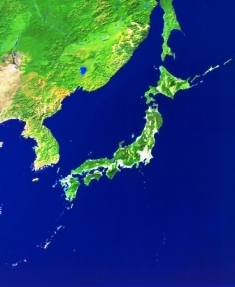 |
|
©
Product/VGL/Clear Light Image Products/Geoscience |
TOKYO, CAPITAL OF
JAPAN
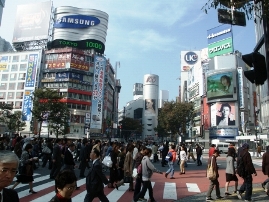 |
The
capital of Japan is Tokyo. This is a massive city with a population of
11.9 million. At Tokyo's centre is a cluster of government buildings
such as the National Diet Building, the Supreme Court, and many
ministries and agencies, making it the centre of Japanese politics. It
is also an economic centre, with many companies located here. It has a
good deal of cultural facilities, newspaper companies, and TV stations,
making it also a centre for culture and information. |
| © Kodansha
International |
JAPANESE
LANGUAGE
The language spoken in Japan is Japanese. To write it, we use a
combination of Chinese kanji characters and two uniquely Japanese
phonetic scripts called hiragana and katakana. |
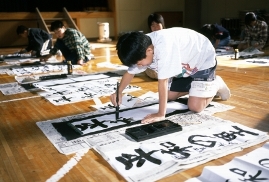 |
|
© Alpina |
JAPAN'S SEASONS
Japan's climate is not uniform, as its landmass stretches far to the
north and south. But generally the country enjoys the four seasons for
spring, summer, autumn, and winter. The Japanese particularly
appreciate the changing of these seasons and like to tune their daily
lives to them.
■SPRING (MARCH - MAY)

The cold of winter abates, a warm wind blows from the south, and
beautiful blossoms of plum and cherry trees start to appear. The school
and working year starts on April 1st, coinciding with this season.
The plum blossom is a good sign that the cold winter will soon end and
spring is just around the corner, followed by the cherry blossom at its
best in the Tokyo area between the end of March and the beginning of
April to bring this beautiful season to a climax. Splendid views of
mountains, fields and gardens all blanketed in gentle pink abound in
this season.
Clothing: light jackets, light
sweaters and other similar kinds of tops.
■SUMMER
(JUNE - AUGUST)
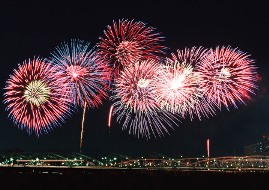
With the exception of Hokkaido, Japan is visited by the tsuyu rainy
season in June to July. But when it ends, summer comes on in full
force, and the heat and humidity can be tremendous. Schools and
companies have their summer breaks, and many people enjoy leisure
activities like camping, going to the seaside or swimming pools, and
mountaineering.
Clothing: light clothes
(cardigans and other similar kinds are handy, since indoors are mostly
air-conditioned.)
■AUTUMN (SEPTEMBER - NOVEMBER)
Autumn always brings such freshness
with a light breeze and cool temperaturewe have the beatiful sight of
autumn leaves and a time of fruits as we approach the harvest season.
All forests are dyed in glorious autumn colors. Chrysanthemums create
beautiful displays with their abundance of flowers to enchant visitors
to parks and gardens. Autumn is also the season for many exhibitions,
music concerts and sports tournaments in Japan.
Clothing: light jackets,
light sweaters and other similar kinds of tops |
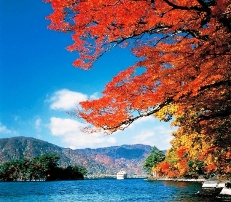 |
|
© Aomori Prefectural Goverenment |
■WINTER (DECEMBER - FEBRUARY)
Winter in Japan is cold. Northern and central Japan receive heavy
blankets of snow, offering many the pleasures of skiing. But in the
plains along the Pacific coast, the temperature rarely drops below 0°C.
It is also quite dry and very often sunny. Southern Japan is
comparatively mild and pleasant in winter.
Clothing: overcoats,
sweaters, etc. |
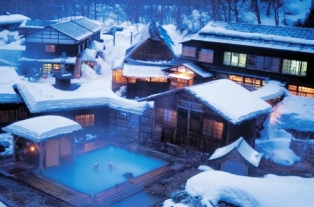 |
|
© Akita Prefecture |
Average Temperature & Precipitation in
Major Cities:
| |
Winter (Jan)
|
Spring (Apr)
|
Summer (Jul)
|
Autumn (Oct)
|
| Sapporo |
|
|
|
|
| Sendai |
|
|
|
|
| Tokyo |
|
|
|
|
| Nagoya |
|
|
|
|
| Osaka |
|
|
|
|
| Fukuoka |
|
|
|
|
| Naha |
|
|
|
|
Key: "T" stands for temperature in (F)
Fahrenheit and (C) Celsius;
"P" stands for precipitation in mm.
■ Links to weather info in Japan:
One-Week
Forcasts
|
